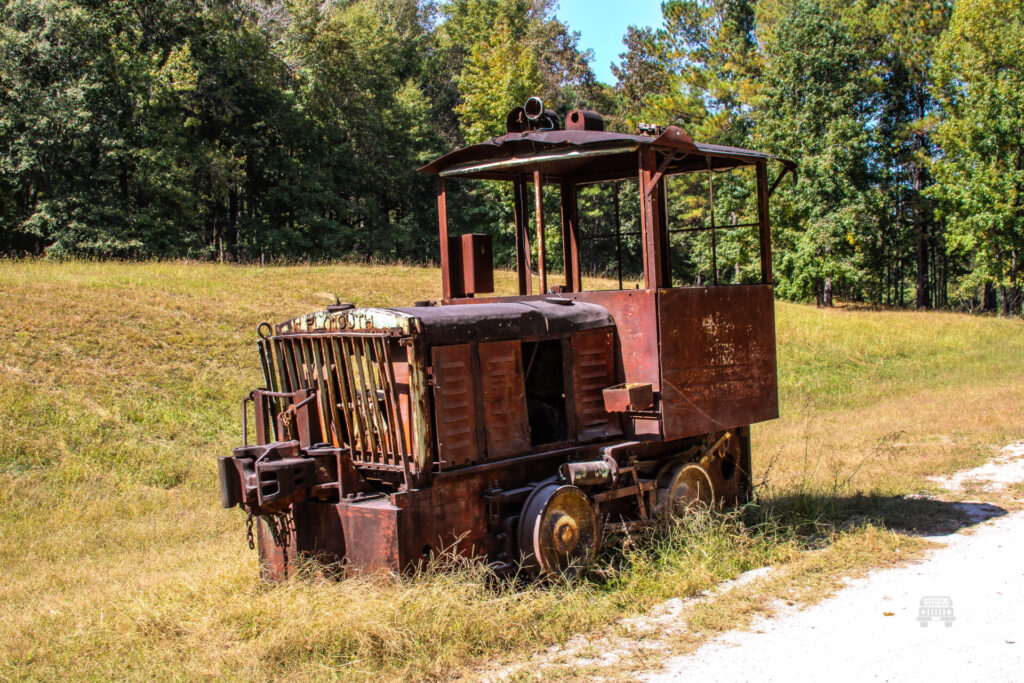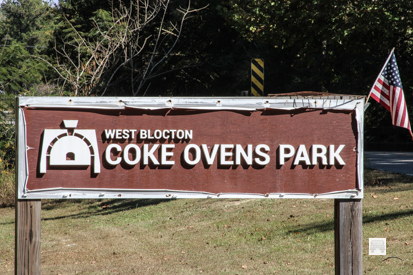As I state over, and over, again when I write I am utterly amazed at what one can find out and about in this great Southland in which we live. The numbers of interesting things is beyond imagination. At ever twist in the road there is another interesting treasure to behold. Sometimes it is a treasure of today. More times than not it is a remnant of our rich and wonderful past.
Recently we had occasion to travel to the area of Tuscaloosa, Al. We took our Motorhome up to park and spent time with my wife’s sister who was taking care of her husband who was terminally ill. By the grace of God we found a spot to park at Vance, Al that was only a very few minutes from their house.
Since we were not totally sure of the outcome of all that was going to happen we had no way of knowing how long we would be up there nor any other particulars so we decided that it would be best if my wife took her car. I of course towed my Jeep behind the motorhome. I mean “have Jeep will travel”.
Once my wife was settled in and able to travel back and forth as she needed I had the itch to find out what is here. First off I looked for a Fire Tower that was in the area but that led to a dead end because when I finally found where I “think” it is there was a locked gate. Therefore that was not going to happen. If I could have seen it and had been able to keep visual line of sight I would have sent my drone in and got some drone footage of it. However I never could see it so that was out.
After that dead end I started back towards Vance still looking. I saw a sign that said West Blockton. I rode through the intersection that I later found out that I should have turned left at to go into West Blockton. A short distance down the road I saw a sign indicating that there was a historic Coke oven there.
Now I don’t know about you but I had to find out more about this historic Coke oven. To start off with the term Coke oven in its own self was a curious thing. I mean I know about Coke a Cola. I knew that this had nothing to do with that. I knew that coke us a slang term for cocaine. I knew that this did not have anything to do with that. So what was this? Then slowly but surely I started to remember that from Alabama History taught when I was in school that coke was used in making steel. Then it all clicked.

So I had to find out about these ovens. Upon entering the park I encountered this small contraption sitting out there like it had been there forever. It has Plymouth written on the top of the grill. It was made out of heavy steel. It looked like a baby railroad locomotive. Upon further study I found from signs posted that this was a small switch engine that was used to spot railroad cars utilized in the process of the Coke ovens. There was actually a track that ran along the top of the ovens and one that ran along the bottom of the ovens. The one at the top I earned was used to fill the ovens from small rail cars called of all things Larrys. These small cars supposedly had discharges under the bottoms that could funnel coal into the tops of the Coke Furnaces. In the middle there was a double row of ovens and on each side there was a single row. The locomotive would position the Larrys over the opening of the furnaces and fill them when they were ready to have a fresh load of coal loaded into them. The tracks on the bottoms beside the ovens were where the coke was loaded onto other cars to be carried to a steel mill to be used in producing iron.
According to another sign more information was given. It said that coke ovens were used to convert coal into coke. Coke was a cleaner burning fuel that produced very little smoke.
Construction started on these ovens in the late 1880’s. There were 140 ovens producing coke by 1889. They were in a bee hive fashion double layered facing out from each side. These rows were later named rows two and three because others were added.
By the summer of 1890 Alabama was in the middle of the boom times of the iron and steel industry. Due to the need for more single rows were added on each side and at the peak there were 467 ovens stretching over four rows.
Coke was the fuel that powered the iron and steel industry in Birmingham which is located not too far away. Coke is produced by being charred from coal much like charcoal is charred from wood. Coke was superior to uncooked coal in numerous ways. It burned hotter, was lighter to transport, and had fewer impurities like sulfur that could weaken the integrity of steel.

To make coke a worker would loosely lay bricks in the door of the oven. Then the small larry car would fill the charging hole on the oven with washed raw coal. Then workers would level the coal in the oven and make sure that the door was tightly filled with bricks only allowing enough opening to allow a proper air flow through the oven to make for proper ignition.
As the coal ignited and started burning it would give a white puff or small explosion. At this point the door was sealed up to keep the col from burning up entirely. Reportedly this charge would burn from 48 to 72 hours. The coke had to be quenched with water so that it could be cooled and would not completely burn up when the door was opened back to remove it. This process was reported to take 45 minutes to an hour to complete.
Then the “puller” opened the door and the finished coke would be broken up and loaded into the rail cars on the bottom to be transported.
These four rows of coke ovens owned by the Cahaba Coal Company were not the earliest coke ovens in its company but well might have been the largest single installation. Had the ovens been placed end to end they would have been over a mile in length. In 1883 The Cahaba Coal Company constructed a company railroad from Woodstock to a mine being opened in a nearby town called Gresham. That town had its name changed to Blockton and was named for a one-ton block of coal that was removed from the number two mine by the mine owner named Truman Aldrich.
By 1887 because of the high quality of the Blockton coal for steam purposes the coal was being furnished to four major railroad corporations. It was reported that Blockton coal was in such high demand that all orders for the coal could not be filled. At peak operation the coke oven facility produced approximately 200 tons of coke per day. After 1909 no records show any coke being produced after that year.
Like so many other towns in the southland we see an area that was raised from wilderness and went through a heyday in time of in many cases less than a century and then dwindled fast. So many towns basically went away later but this one was earlier.
While walking through the rows of mounds of overgrowth looking up and the remnants of some of the coke ovens still somewhat intact one can only imagine what it must have been like with all of this in operation.
The would have been in all probability a heavy haze of smoke and coal dust floating through the air continuously. It would have been hot, hard, dirty work to keep the coal flowing in and the coke flowing out. One can only imagine how may men would have been required to keep it going. Also, understand the fact that there was little machinery available to do this sort of work. Thus most of the work was physical that was involved in handling the production of this vital product.
I am thankful that the city of West Blockton still has this informative park opened. It is sad that it is not maintained to a level that one can easily see how it was all done back in the days of the production of the coke.
I would invite anybody that has a thirst for knowledge of thing of the past to stop by this place and see the history of this place that like countless others of our past is slowly deteriorating into oblivion.

Great post